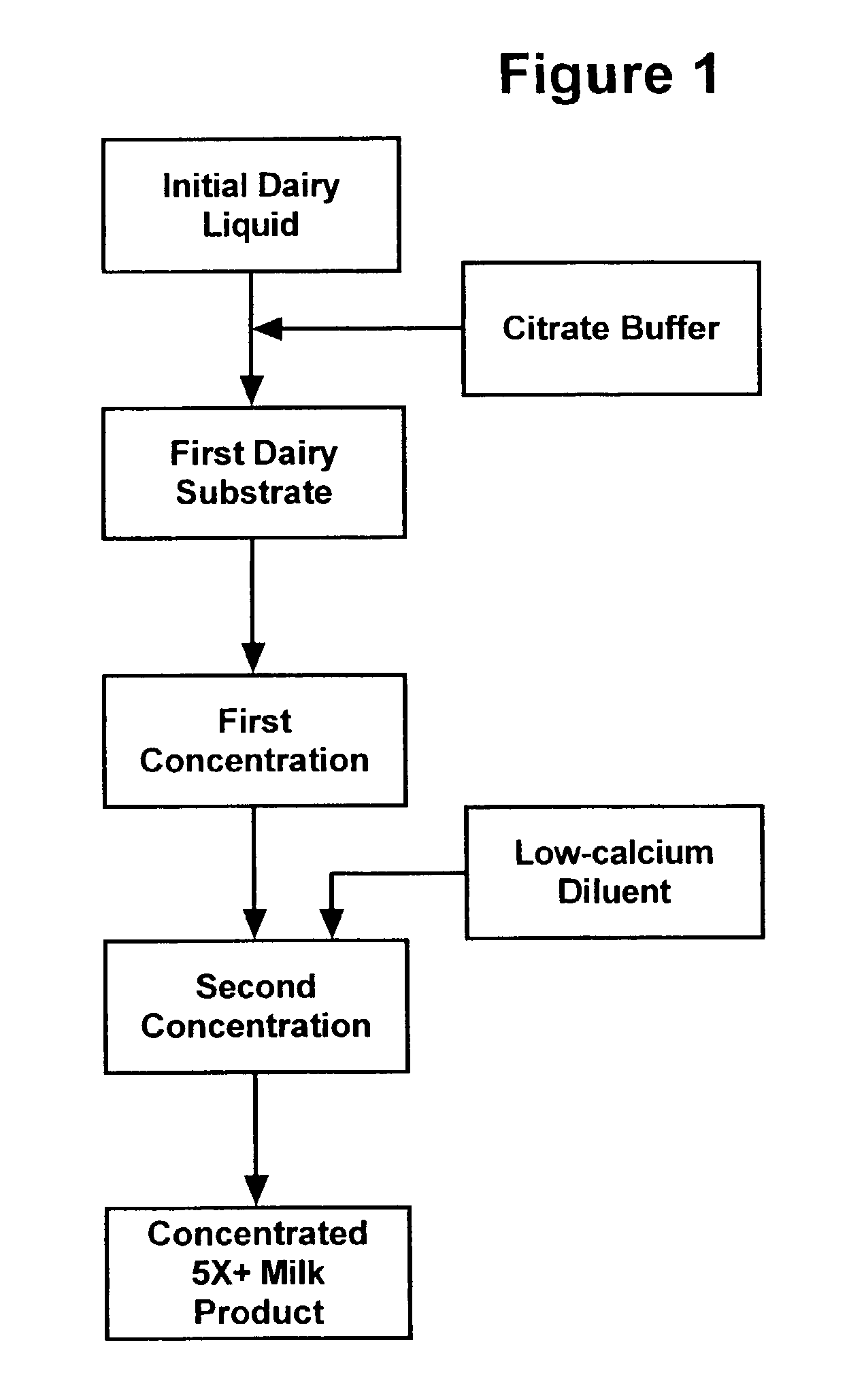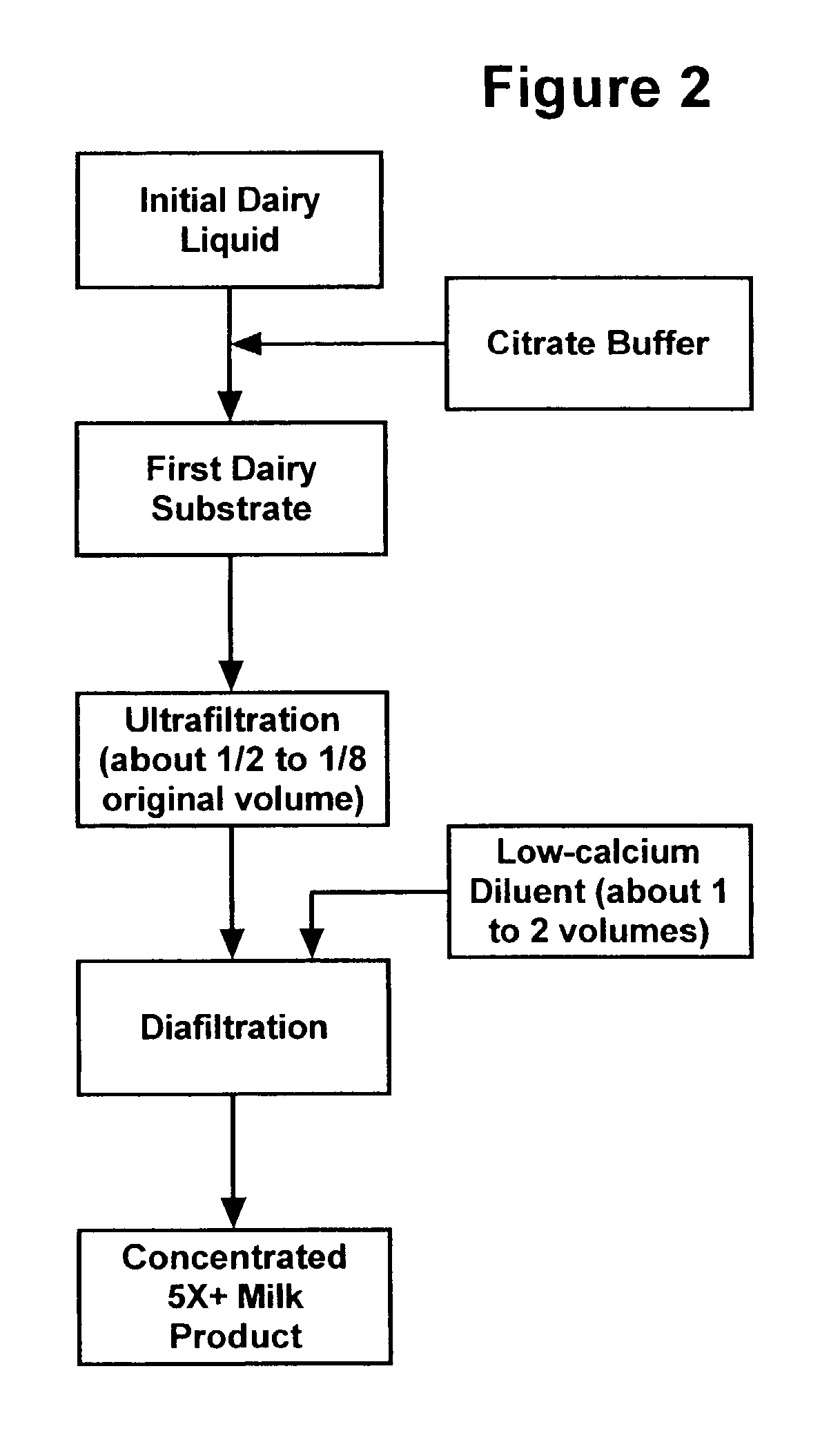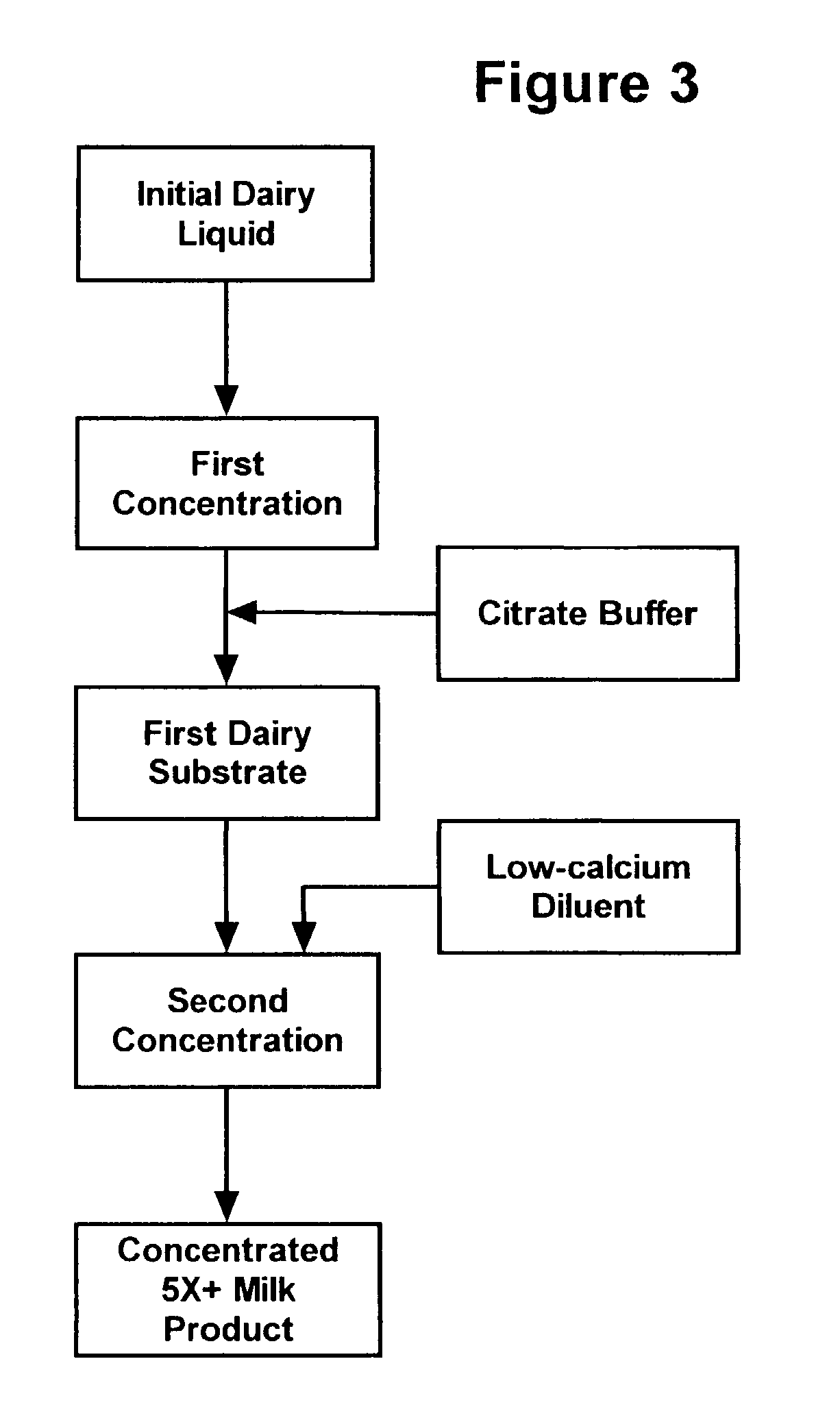Non-gelling milk concentrates
- Summary
- Abstract
- Description
- Claims
- Application Information
AI Technical Summary
Benefits of technology
Problems solved by technology
Method used
Image
Examples
example 1
[0040]This example provides an embodiment of the process of the present invention according to FIGS. 1 and 2. Citrate buffer (24 lbs; 3.2 percent citric acid, 21.5 percent trisodium citrate, 75.3 percent water) was added to 600 lbs. of pasteurized skim milk at about 49° C. The milk and buffer solution (about 49° C.) was ultrafiltered with a 10,000 molecular weight cut-off membrane to a concentration factor of three. The retentate was then diafiltered with two volumes of water at constant weight, and then further concentrated to a final concentration factor of six.
[0041]The resulting concentrate contained about 13.5 percent protein with a casein to whey protein ratio of about 80 / 20, about 1020 ppm calcium, and a calcium to protein ratio of about 0.008. The milk concentrates did not gel upon refrigerated storage (i.e., about 2 to about 8° C.) even after about 10 weeks. In contrast and as illustrated in FIG. 5, a similar but conventionally prepared concentrate would be expected to gel ...
example 2
[0043]This example provides another embodiment of the process of the present invention according to FIGS. 3 and 4. Pasteurized skim milk (3000 lbs.) pounds was microfiltered in a Tetra Pak microfiltration system consisting of 4 stages, wherein each stage contained 7 ceramic membrane elements with an average pore size of 0.1 micrometer, with a total membrane area of about 9 m2. The skim milk was microfiltered to a concentration factor of about three at a feed rate of 30 lbs per minute, a processing temperature of 49° C., and an average uniform trans-membrane pressure of 0.3 bars. Citrate buffer (126 lbs; 3.2 percent citric acid, 21.5 percent trisodium citrate, 75.3 percent water; pH 5.7; Brix reading: 23.5 percent; temperature about 25° C.) was added to 1030 lbs of the microfiltration retentate (Brix Reading: 16 percent; 14 percent total solids, pH 6.7, temperature about 49° C.). The microfiltration retentate and buffer were then diafiltered and ultrafiltered with three volumes of wa...
PUM
 Login to View More
Login to View More Abstract
Description
Claims
Application Information
 Login to View More
Login to View More - R&D
- Intellectual Property
- Life Sciences
- Materials
- Tech Scout
- Unparalleled Data Quality
- Higher Quality Content
- 60% Fewer Hallucinations
Browse by: Latest US Patents, China's latest patents, Technical Efficacy Thesaurus, Application Domain, Technology Topic, Popular Technical Reports.
© 2025 PatSnap. All rights reserved.Legal|Privacy policy|Modern Slavery Act Transparency Statement|Sitemap|About US| Contact US: help@patsnap.com



